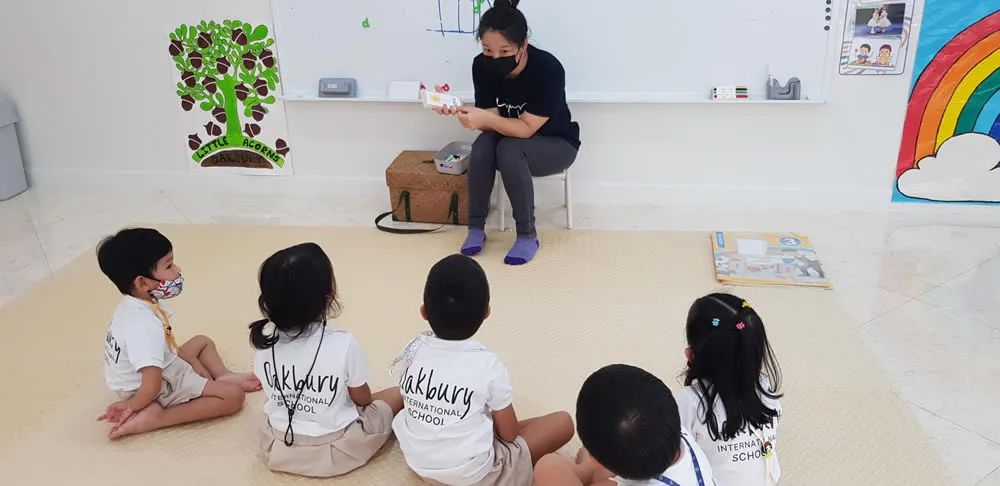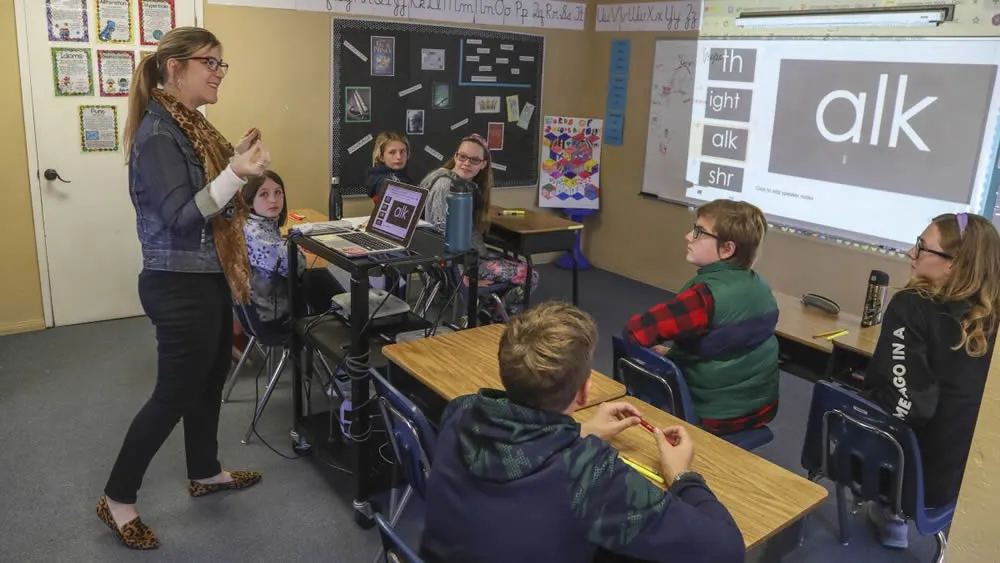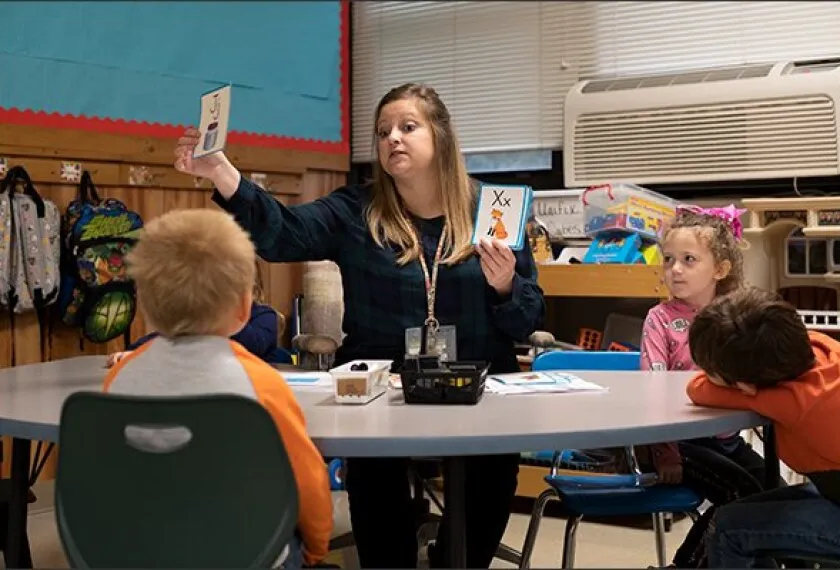Phonics Courses

Source: oakbury
Phonics Courses
As the world of education continues to evolve, it’s essential to stay ahead with effective learning strategies. One such crucial tool for young learners is phonics.
The Phonics Courses offered by Vidhyanidhi Education Society (VES) provide a powerful approach to simplifying the complexities of the English language, making it more accessible and enjoyable for children.
By integrating these courses into our teaching methods, we can create a solid foundation for children to become confident readers and expressive writers. The journey of exploring the beautiful landscape of language learning begins here.
Table of Content
- Benefits of Learning Phonics
- Career Pathways for Phonics Teacher
- Benefits of Pursuing Phonic Course from VES
- Duration of Phonics Courses
- Eligibility for Phonics Courses
- Course Content for Phonics Courses
- Phonics Course Fees
- Phonics Teacher Training Course in Mumbai
- Structure of Phonics Courses
- How to Teach Phonics to Adults?
- How to Teach Phonics to Struggling Readers?

Source: landmarkschool
Benefits of Learning Phonics
Here are the Benefits of Learning Phonics:
- With Phonics at the core of their teaching strategy, educators instill in young children the ability to discern letter sounds, empowering them to read fluently and accurately.
- This method nurtures a rich vocabulary and instills a habitual inclination towards reading.
- Phonics eliminates the traditional method of hardcoding spellings into memory.
- This approach encourages a fondness for the English language, making learning a rewarding experience.
- Phonics helps to mitigate learning stress, simplifying the path to acquiring reading, writing, and spelling skills.
- Academic excellence often follows the Phonics approach, reflected in the children’s superior school grades.
Career Pathways for Phonics Teacher
As a graduate of our Phonics Courses, you will have access to the following Career Pathways for Phonics Teachers:
- Start an independent learning facility dedicated to the instruction of phonics, providing a stimulating environment for children to explore sounds and letters.
- Embark on a rewarding career with educational institutions that follow State, CBSE, ICSE, IGCSE, or IB board standards, in India or overseas.
- Delve into specialized or remedial teaching roles, providing focused phonics instruction to children who require additional support.
- Act as a phonics instructor’s guide at any learning center, instilling effective phonics teaching strategies in aspiring educators.
- Contribute to the creation and execution of phonics curriculum planning or content development, enriching the teaching materials available for phonics instruction.
Our team is ready to assist with your queries at +919869546913 / +919869866277.
Please Click Here if you’d like to download our Phonics Course brochure.

Source: brightspot
Benefits of Pursuing Phonic Course from VES
The are many Benefits of Pursuing Phonic Course from VES, like:
- Utilizes the well-regarded Synthetic Phonics approach from the UK, recognized for its effectiveness in teaching and learning.
- Combines practical skill training with theoretical knowledge, all within an enriching learning environment to fully equip participants.
- Encompasses a variety of interactive learning sessions, offering numerous opportunities for practice, concept clarification, and real-world demonstrations.
- Equips educators with a comprehensive study kit, detailed handouts, engaging audio-visual resources, and useful teaching tools.
- Provides participants with all the necessary know-how to establish and manage their phonics classes successfully.
- Presented by industry specialists with extensive experience in phonics education.
- Offered at a highly reasonable rate, ensuring affordability while maintaining high standards of instruction.
Duration of Phonics Courses
The Duration of Phonics Courses involves a thorough 18-hour session, providing a complete package for those keen to hone their skills in teaching Phonics.
Eligibility for Phonics Courses
A solid grasp of the English language qualifies you for the Eligibility for Phonics Courses to earn a ‘Phonics Teachers’ Training Certificate.’
Course Content for Phonics Courses
Phonics Courses empower teachers to master the art of teaching phonics.
The Course Content for Phonics Courses includes:
Phonemic Storytelling
Engage with the sounds of letters through compelling stories, dynamic actions, and rhythmic jingles.
Craft of Letters
Learn how to guide students in forming each letter of the alphabet.
Fusion Technique
Understand the practice of blending, a key component in learning to read.
Dissection of Sounds
Learn to segment, a crucial skill for identifying sounds in words to facilitate spelling.
Initial and Terminal Blend Investigation
Delve into the world of blends that occur at the beginning and end of words.
Digraph Dialects
Discover the unique sounds of digraphs through storytelling and actions, and differentiate them from blends.
Tackling Unconventional Words
Develop strategies for dealing with tricky words that deviate from the usual phonics rules.
Phonics Regulations
Master the rules that underpin phonics.
Vowel Variation Voyage
Embark on a journey exploring the different sounds and spellings of vowels.
Our team is ready to assist with your queries at +919869546913 / +919869866277.
Please Click Here if you’d like to download our Phonics Course brochure.

Source: cdn
Phonics Course Fees
With our Phonics Class for Teachers, quality education doesn’t need to be extravagant. We provide this essential course at a price that respects your budget.
We sweeten the deal with numerous enticing offers and generous discounts, making this valuable course an irresistible choice for aspiring teachers.
Our easy Phonics Course Fees payment alternatives are designed to suit different financial scenarios, ensuring you get the education you deserve without any undue stress.
Phonics Teacher Training Course in Mumbai
Educators seeking to enhance their phonics teaching skills will find the Phonics Teacher Training Course in Mumbai at the VES institute near Borivali (west) station an ideal choice. The program offers the flexibility of weekday and weekend workshops, facilitating convenient scheduling. The training involves practical methods like story-telling, action-based learning, singing instructional jingles, and tackling worksheets.
Furthermore, the curriculum covers the creation of teaching aids and provides strategic guidance for setting up phonics centers. All Phonics Courses workshops are facilitated by industry veterans, ensuring a dynamic, interactive environment that allows ample practice for each trainee.
Structure of Phonics Courses
Step into the world of phonetics with the Phonics Courses at Vidhyanidhi Education Society (VES). Our class structure is thoughtfully designed to drive your professional growth and infuse a sense of achievement in your life.
Structure of Phonics Courses at VES:
Schedule Flexibility
Whether you prefer a weekday (Monday to Friday) batch or a weekend (Saturday and Sunday), we offer a range of time options to cater to your needs, making your learning journey more enjoyable.
Ongoing Course Sessions
To accommodate your ever-evolving educational needs, we conduct batches at regular intervals throughout the year. This allows for continuous learning and professional enhancement at your own pace.
Easy-to-Pass Evaluation
To certify your proficiency, we administer a simple, on-the-spot evaluation test. We believe in a straightforward assessment process that effectively gauges your understanding and skills.
How to Teach Phonics to Adults?
Adults already possess a basic knowledge of the language, therefore teaching Phonics to adults might be a little different from teaching students. Nonetheless, the same principles apply, and only the strategy to teach them changes.
Below are some strategies on How to Teach Phonics to Adults:
Assess Skills and Needs
Determine the adult learner’s current literacy skills. This will help you understand where they are in terms of phonics knowledge, and you can plan lessons accordingly.
Begin with Basic Sounds
Start with the basics and slowly increase complexity. Teach them the individual sounds each letter makes. Use flashcards or other visual aids to help associate the letter with the sound.
Blend Sounds
Once they’re comfortable with individual sounds, move on to blending sounds. Start with simple two-letter blends and gradually increase complexity.
Use Visual Aids
Visual aids such as flashcards, diagrams, and pictures can be helpful for adult learners. You could also use digital resources like online phonics programs.
Incorporate Practical Application
Provide opportunities to apply what they have learned. This can be through reading exercises, dictation, or even real-life materials such as newspapers and magazines.
Repetition and Practice
Learning phonics requires a lot of repetition and practice. Review previous lessons regularly to reinforce learning.
Our team is ready to assist with your queries on +919869546913 / +919869866277.
Please Click Here if you’d like to download our Phonics Course brochure.

Source: bridge
Encourage Reading
Encourage the adult to read regularly. Reading allows them to see the phonics rules in action and reinforce their understanding.
Use Multisensory Techniques
Engage various senses by using multimedia resources. For example, there are numerous online resources, apps, and games designed to teach phonics. These typically involve hearing, seeing, and sometimes even touching, which can make learning more engaging.
Be Patient and Positive
Learning new skills can be frustrating, especially for adult learners. A positive and patient attitude while teaching adults is essential. Keep them motivated by celebrating their improvement.
Personalize Learning
Adults often have specific reasons for wanting to learn or improve their phonics, such as job requirements or personal goals. Tailor the learning experience to their needs and interests whenever possible to keep them engaged.
Remember, the goal of teaching phonics is not just to learn the rules but to apply these rules to improve reading and writing. Practical application of phonics should be a crucial part of your teaching strategy.
How to Teach Phonics to Struggling Readers?
The process of teaching phonics to struggling readers can be challenging. However, it can be effective with patience, proper techniques, and supportive learning materials.
Here are some steps on How to Teach Phonics to Struggling Readers:
Evaluate the Student’s Current Level
For effective assistance to struggling readers, it is essential to identify the areas they are struggling with. Use assessments to identify the specific areas where they’re having difficulty. This could be with certain letters, blends, or digraphs.
Start with the Basics
If a student is having difficulty with phonics, it’s usually best to start at the beginning with basic phonemic awareness, even if the student seems beyond that point. Phonemic awareness is the skill to hear, recognize, and manipulate sounds in words. You can develop this through rhyming games, syllable counting, or identifying sounds in words.
Use Multisensory Approaches
This can help make the learning process more engaging and can aid memory retention. For example, you might ask the student to trace letters with their finger as they say the sound out loud.
Teach Phonics in Context
While it can be helpful to start with isolated sounds, it’s also important to help the student apply what they’re learning to actual reading. Use texts that are at the student’s reading level and emphasize the sounds and phonics rules that you’ve been teaching.
Practice Regularly
Regular practice is key when it comes to mastering phonics. Try to incorporate phonics practice into the student’s daily routine.
Use Decodable Texts
Decodable texts are books or passages that the student can read using the phonics rules they’ve learned so far. These texts allow students to practice their phonics skills in context, which can help improve their reading fluency.
Provide Plenty of Positive Feedback
Building confidence is crucial for struggling readers. Celebrate their successes, no matter how small, and provide them with plenty of encouragement and positive reinforcement.
Use Phonics Games and Apps
Games and apps can be an effective way to engage students and make phonics practice more enjoyable. There are numerous paid and free, ready-to-use resources available.
Synthetic Phonics
Use Synthetic Phonics, where children learn to relate letters or groups of letters with their sounds and blend them to form words. For example, students learn to connect the letter a with the sound /a/, and t with /t/. They then learn to blend the /a/ and /t/ sounds to make the word “at.”
Be Patient and Persistent
Learning phonics can be a slow process, especially for struggling readers. Teachers should have patience and persistence. Please remember that advancement might be slow, but every little progress is significant.
“Get the Vidhyanidhi edge in Phonics teaching, register now!”
Our team is ready to help with your queries at +919869546913 / +919869866277.
Please Click Here if you’d like to download our Phonics Course brochure.
FAQ
How to Be a Phonics Teacher
Become a proficient phonics teacher by joining VES's Phonics Teacher Training Programme.
What is the Phonics?
Phonics is a method used to teach reading and writing by correlating sounds with letters.
What is the Definition of Phonics?
Phonics is the study of sound-letter relationships used in reading and writing.
What is the Whole Language Approach to Reading?
Whole Language Approach emphasizes meaning and strategy over sound-letter correspondence.
How to Be a Phonics Teacher
Become a proficient phonics teacher by joining VES's Phonics Teacher Training Programme.
What is the Phonics?
Phonics is a method used to teach reading and writing by correlating sounds with letters.
What is the Definition of Phonics?
Phonics is the study of sound-letter relationships used in reading and writing.
What is the Whole Language Approach to Reading?
Whole Language Approach emphasizes meaning and strategy over sound-letter correspondence.




